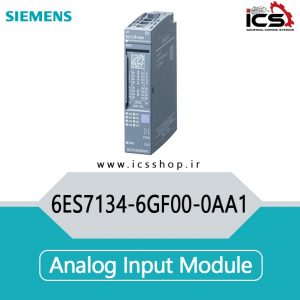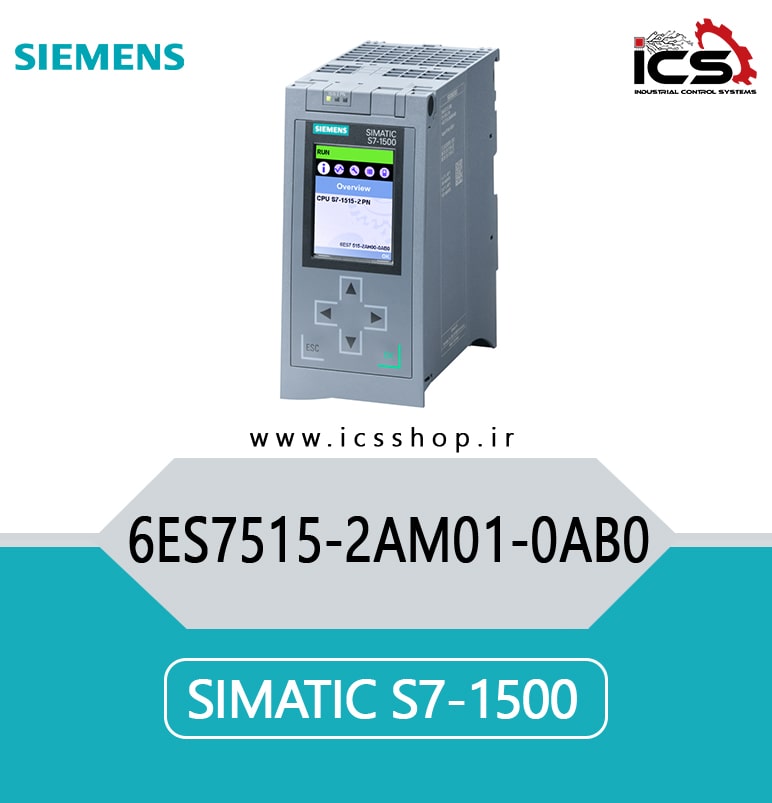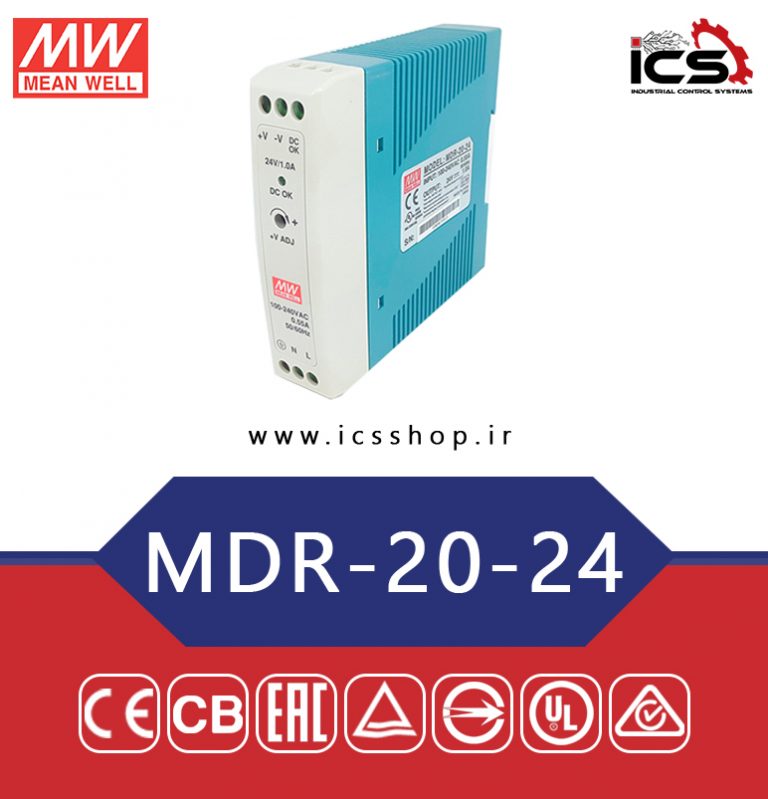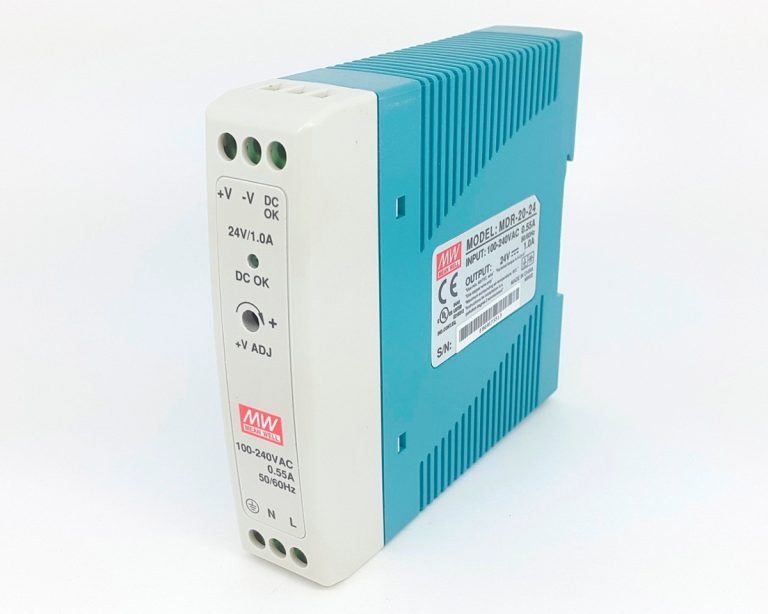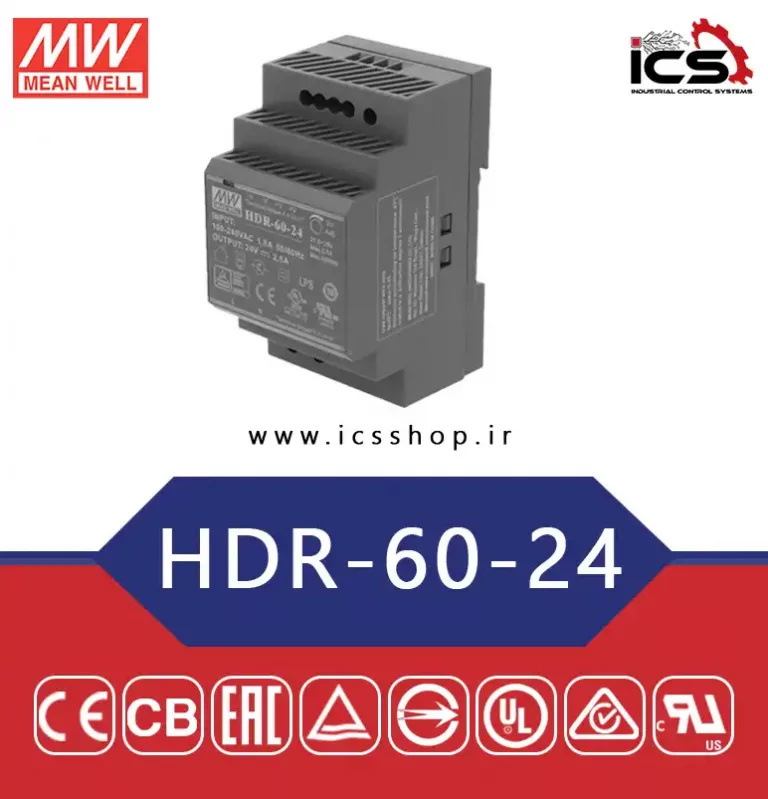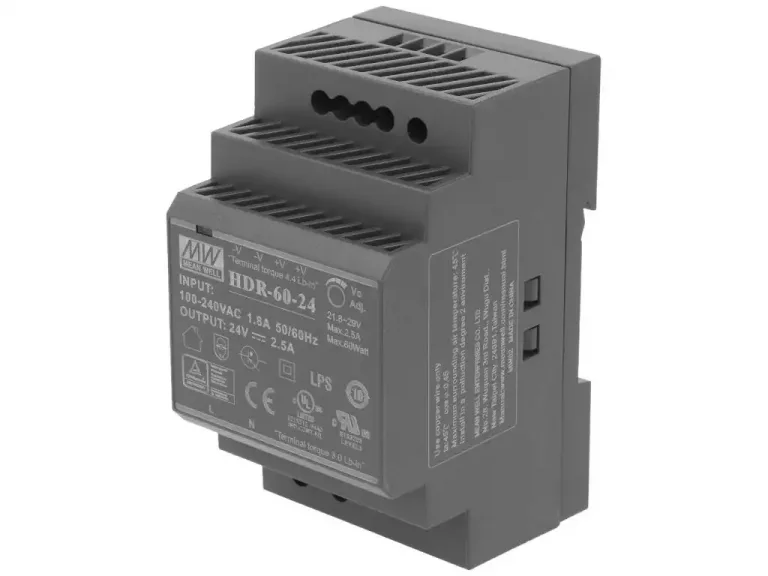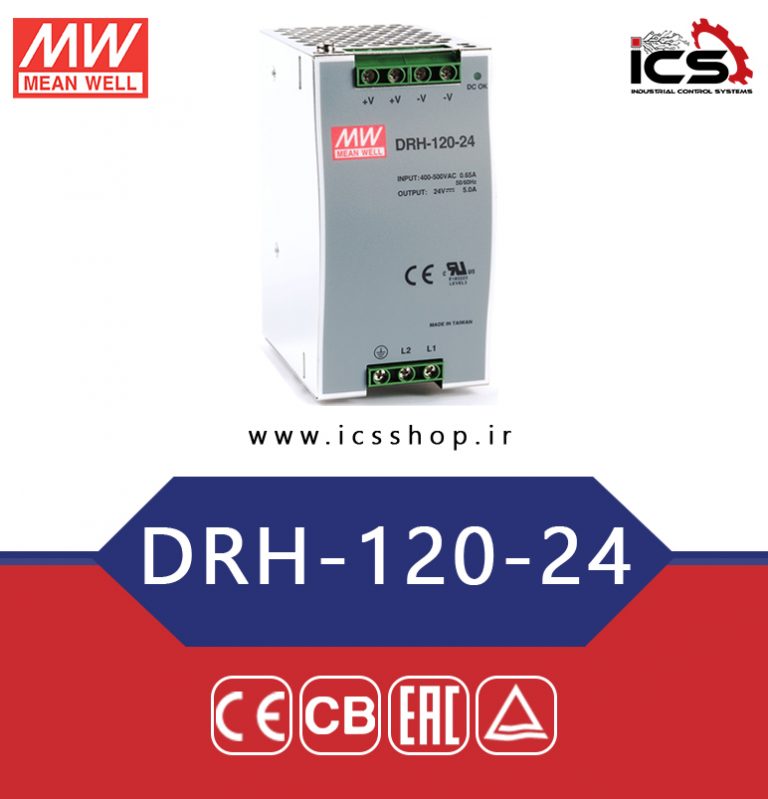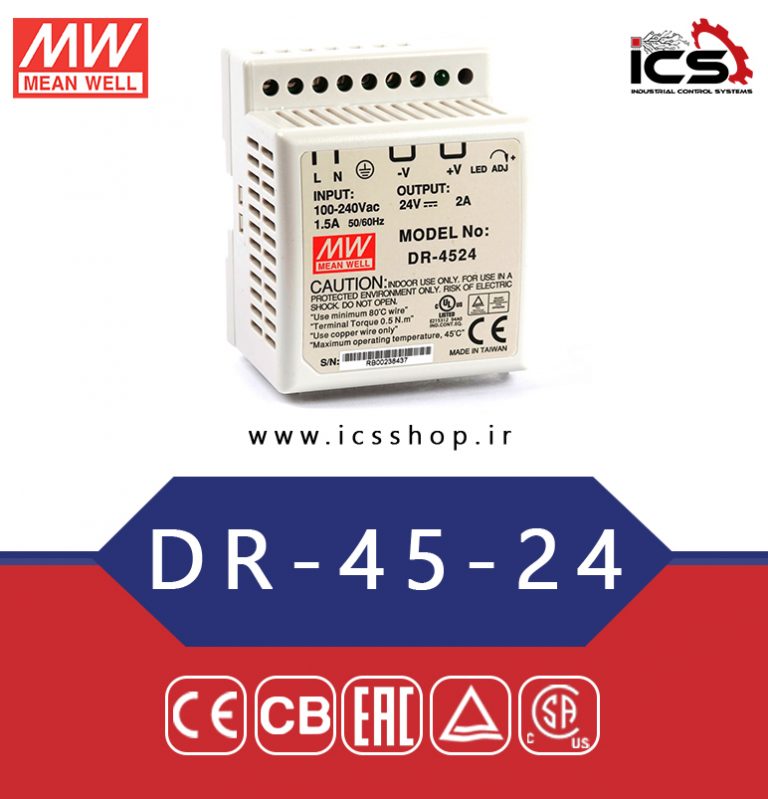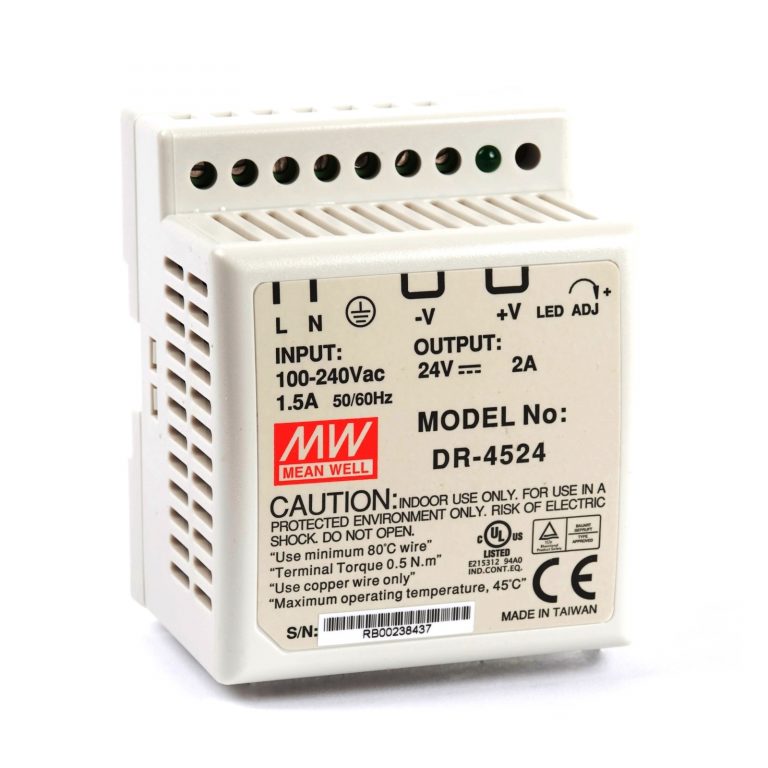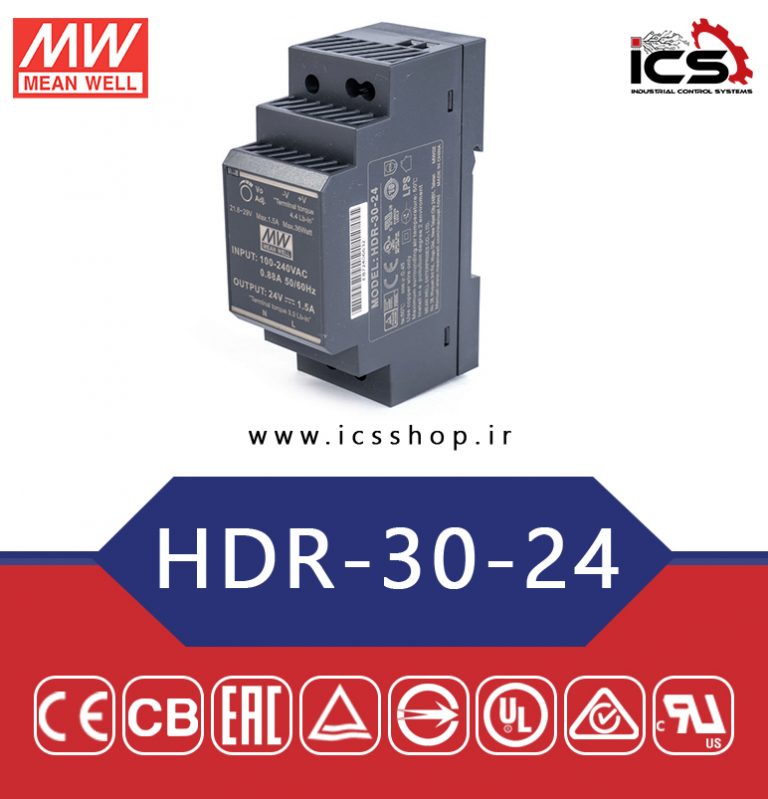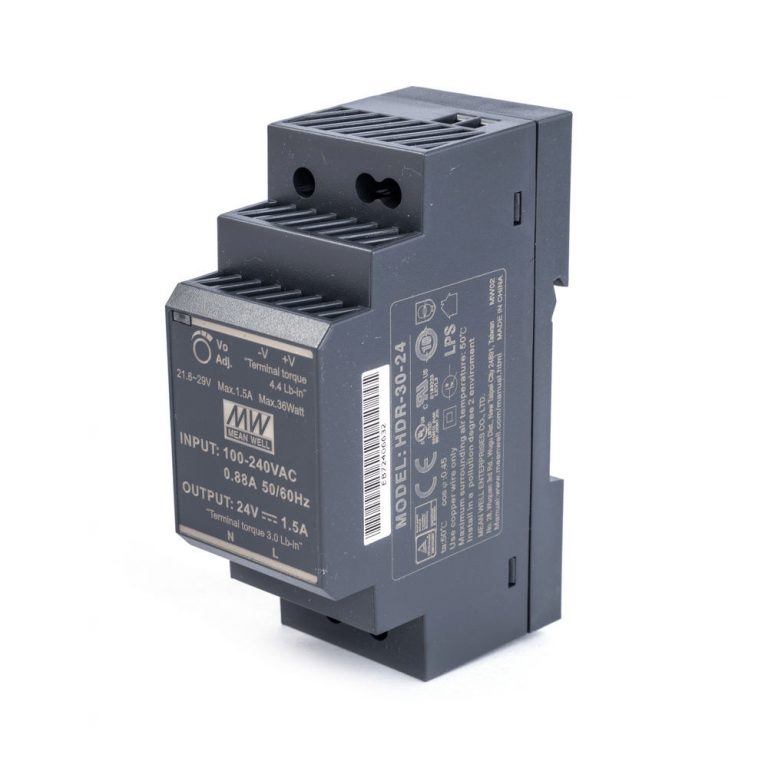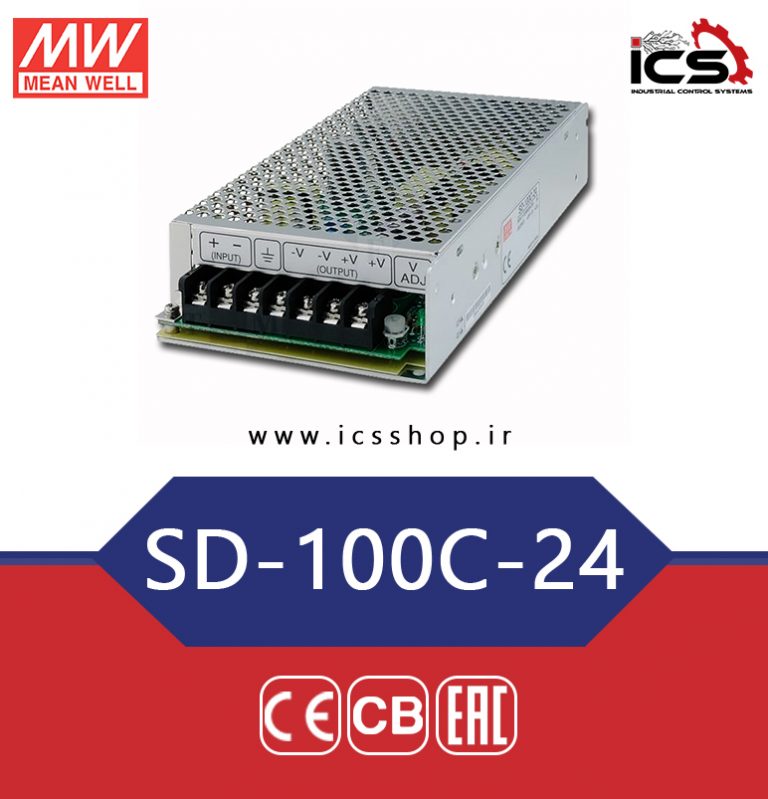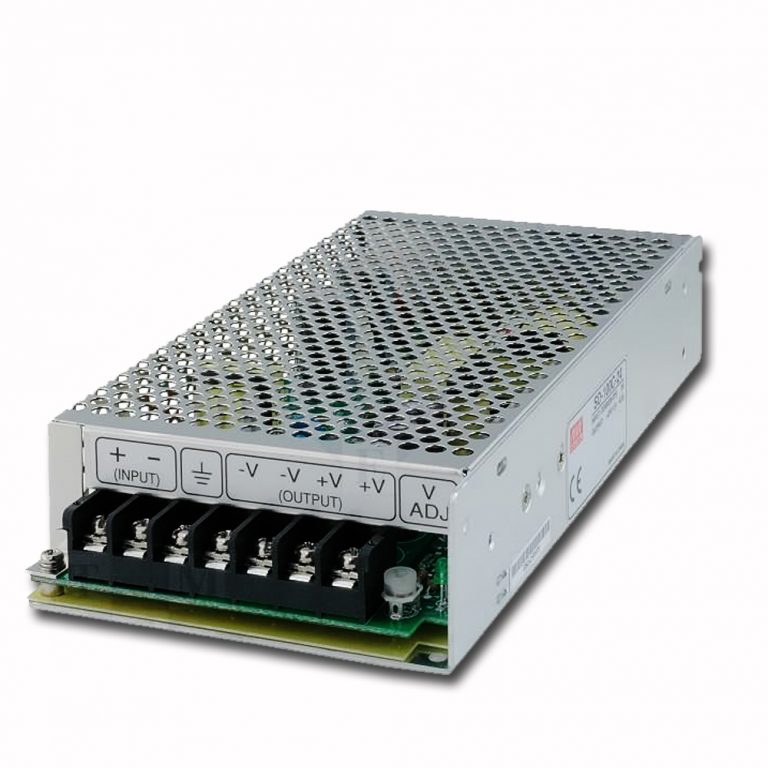S7-1500 SIEMENS 6ES7515-2AM01-0AB0
SIMATIC S7-1500 SIEMENS , CPU 1515-2 PN, Central processing unit with work memory 500 KB for Program and 3 MB for data, 1st interface: PROFINET IRT with 2-port switch, 2nd interface: PROFINET RT, 30 ns bit performance, SIMATIC Memory Card required
General information |
|
| Product type designation | CPU 1515-2 PN |
| HW functional status | FS03 |
| Firmware version | V2.8 |
| Product function | |
| ● I&M data | Yes; I&M0 to I&M3 |
| ● Isochronous mode | Yes; Distributed and central; with minimum OB 6x cycle of 500 µs (distributed) and 1 ms (central) |
| Engineering with | |
| ● STEP 7 TIA Portal configurable/integrated as of version | V16 (FW V2.8) / V13 (FW V1.5) or higher |
| Configuration control | |
| via dataset | Yes |
| Display | |
| Screen diagonal [cm] | 6.1 cm |
| Control elements | |
| Number of keys | 6 |
| Mode selector switch | 1 |
Supply voltage |
|
| Type of supply voltage | 24 V DC |
| permissible range, lower limit (DC) | 19.2 V |
| permissible range, upper limit (DC) | 28.8 V |
| Reverse polarity protection | Yes |
| Mains buffering | |
| ● Mains/voltage failure stored energy time | 5 ms |
| ● Repeat rate, min. | 1/s |
| Input current | |
| Current consumption (rated value) | 0.8 A |
| Inrush current, max. | 2.4 A; Rated value |
| I²t | 0.02 A²·s |
| Power | |
| Infeed power to the backplane bus | 12 W |
| Power consumption from the backplane bus (balanced) | 6.2 W |
| Power loss | |
| Power loss, typ. | 6.3 W |
| Memory | |
| Number of slots for SIMATIC memory card | 1 |
| SIMATIC memory card required | Yes |
| Work memory | |
| ● integrated (for program) | 500 kbyte |
| ● integrated (for data) | 3 Mbyte |
| Load memory | |
| ● Plug-in (SIMATIC Memory Card), max. | 32 Gbyte |
Backup |
|
| ● maintenance-free | Yes |
| CPU processing times | |
| for bit operations, typ. | 30 ns |
| for word operations, typ. | 36 ns |
| for fixed point arithmetic, typ. | 48 ns |
| for floating point arithmetic, typ. | 192 ns |
CPU-blocks |
|
| Number of elements (total) | 6 000; Blocks (OB, FB, FC, DB) and UDTs |
| DB | |
| ● Number range | 1 … 60 999; subdivided into: number range that can be used by the user: 1 … 59 999, and number range of DBs created via SFC 86: 60 000 … 60 999 |
| ● Size, max. | 3 Mbyte; For DBs with absolute addressing, the max. size is 64
KB |
| FB | |
| ● Number range | 0 … 65 535 |
| ● Size, max. | 500 kbyte |
| FC | |
| ● Number range | 0 … 65 535 |
| ● Size, max. | 500 kbyte |
OB |
|
| ● Size, max. | 500 kbyte |
| ● Number of free cycle OBs | 100 |
| ● Number of time alarm OBs | 20 |
| ● Number of delay alarm OBs | 20 |
| ● Number of cyclic interrupt OBs | 20; With minimum OB 3x cycle of 500 µs |
| ● Number of process alarm OBs | 50 |
| ● Number of DPV1 alarm OBs | 3 |
| ● Number of isochronous mode OBs | 2 |
| ● Number of technology synchronous alarm OBs | 2 |
| ● Number of startup OBs | 100 |
| ● Number of asynchronous error OBs | 4 |
| ● Number of synchronous error OBs | 2 |
| ● Number of diagnostic alarm OBs | 1 |
Nesting depth |
|
| ● per priority class | 24 |
| Counters, timers and their retentivity | |
| S7 counter | |
| ● Number | 2 048 |
| Retentivity | |
| — adjustable | Yes |
| IEC counter | |
| ● Number | Any (only limited by the main memory) |
| Retentivity | |
| — adjustable | Yes |
| S7 times | |
| ● Number | 2 048 |
Retentivity |
|
| — adjustable | Yes |
| IEC timer | |
| ● Number | Any (only limited by the main memory) |
| Retentivity | |
| — adjustable | Yes |
| Data areas and their retentivity |
| Retentive data area (incl. timers, counters, flags), max. | 512 kbyte; In total; available retentive memory for bit memories, timers, counters, DBs, and technology data (axes): 472 KB |
| Extended retentive data area (incl. timers, counters, flags), max. | 3 Mbyte; When using PS 6 0W 24/48/60 V DC HF |
| Flag | |
| ● Number, max. | 16 kbyte |
| ● Number of clock memories | 8; 8 clock memory bit, grouped into one clock memory byte |
Data blocks |
|
| ● Retentivity adjustable | Yes |
| ● Retentivity preset | No |
| Local data | |
| ● per priority class, max. | 64 kbyte; max. 16 KB per block |
| Address area | |
| Number of IO modules | 8 192; max. number of modules / submodules |
| I/O address area | |
| ● Inputs | 32 kbyte; All inputs are in the process image |
| ● Outputs | 32 kbyte; All outputs are in the process image |
per integrated IO subsystem |
|
| — Inputs (volume) | 8 kbyte |
| — Outputs (volume) | 8 kbyte |
| per CM/CP | |
| — Inputs (volume) | 8 kbyte |
| — Outputs (volume) | 8 kbyte |
| Subprocess images | |
| ● Number of subprocess images, max. | 32 |
Hardware configuration |
|
| Number of distributed IO systems | 64; A distributed I/O system is characterized not only by the integration of distributed I/O via PROFINET or PROFIBUS communication modules, but also by the connection of I/O via ASi master modules or links (e.g. IE/PB-Link) |
| Number of DP masters | |
| ● Via CM | 8; A maximum of 8 CMs/CPs (PROFIBUS, PROFINET, Ethernet) can be inserted in total |
| Number of IO Controllers | |
| ● integrated | 2 |
| ● Via CM | 8; A maximum of 8 CMs/CPs (PROFIBUS, PROFINET, Ethernet) can be inserted in total |
| Rack | |
| ● Modules per rack, max. | 32; CPU + 31 modules |
| ● Number of lines, max. | 1 |
| PtP CM | |
| ● Number of PtP CMs | the number of connectable PtP CMs is only limited by the number of available slots |
Time of day |
|
| Clock | |
| ● Type | Hardware clock |
| ● Backup time | 6 wk; At 40 °C ambient temperature, typically |
| ● Deviation per day, max. | 10 s; Typ.: 2 s |
| Operating hours counter | |
| ● Number | 16 |
| Clock synchronization | |
| ● supported | Yes |
| ● in AS, master | Yes |
| ● in AS, slave | Yes |
| ● on Ethernet via NTP | Yes |
| Interfaces | |
| Number of PROFINET interfaces | 2 |
| 1. Interface | |
| Interface types | |
| ● Number of ports | 2 |
| ● integrated switch | Yes |
| ● RJ 45 (Ethernet) | Yes; X1 |
Protocols |
|
| ● IP protocol | Yes; IPv4 |
| ● PROFINET IO Controller | Yes |
| ● PROFINET IO Device | Yes |
| ● SIMATIC communication | Yes |
| ● Open IE communication | Yes; Optionally also encrypted |
| ● Web server | Yes |
| ● Media redundancy | Yes |
| PROFINET IO Controller | |
Services |
|
| — PG/OP communication | Yes |
| — S7 routing | Yes |
| — Isochronous mode | Yes |
| — Direct data exchange | Yes; Requirement: IRT and isochronous mode (MRPD optional) |
| — IRT | Yes |
| — MRP | Yes; MRP Automanager acc. to IEC 62439-2 Edition 2.0; MRP Manager; MRP Client; max. number of devices in the ring: 50 |
| — MRPD | Yes; Requirement: IRT |
| — PROFIenergy | Yes; per user program |
| — Prioritized startup | Yes; Max. 32 PROFINET devices |
| — Number of connectable IO Devices, max. | 256; In total, up to 1 000 distributed I/O devices can be connected via AS-i, PROFIBUS or PROFINET |
| — Of which IO devices with IRT, max. | 64
256 |
| — Number of connectable IO Devices for RT, max. | |
| — of which in line, max. | 256 |
| — Number of IO Devices that can be simultaneously activated/deactivated, max. | 8; in total across all interfaces |
| — Number of IO Devices per tool, max. | 8 |
| — Updating times | The minimum value of the update time also depends on communication share set for PROFINET IO, on the number of IO devices, and on the quantity of configured user data |
Update time for IRT |
|
| — for send cycle of 250 µs | 250 μs to 4 ms; Note: In the case of IRT with isochronous mode, the minimum update time of 500 µs of the isochronous OB is decisive |
| — for send cycle of 500 µs | 500 µs to 8 ms |
| — for send cycle of 1 ms | 1 ms to 16 ms |
| — for send cycle of 2 ms | 2 ms to 32 ms |
| — for send cycle of 4 ms | 4 ms to 64 ms |
| — With IRT and parameterization of “odd” send cycles | Update time = set “odd” send clock (any multiple of 125 µs: 375 µs, 625 µs … 3 875 µs) |
| Update time for RT | |
| — for send cycle of 250 µs | 250 µs to 128 ms |
| — for send cycle of 500 µs | 500 µs to 256 ms |
| — for send cycle of 1 ms | 1 ms to 512 ms |
| — for send cycle of 2 ms | 2 ms to 512 ms |
| — for send cycle of 4 ms | 4 ms to 512 ms |
| PROFINET IO Device | |
| Services | |
| — PG/OP communication | Yes |
| — S7 routing | Yes |
| — Isochronous mode | No |
| — IRT | Yes |
| — MRP | Yes; MRP Automanager acc. to IEC 62439-2 Edition 2.0; MRP Manager; MRP Client; max. number of devices in the ring: 50 |
| — MRPD | Yes; Requirement: IRT |
| — PROFIenergy | Yes; per user program |
| — Shared device | Yes |
| — Number of IO Controllers with shared device, max. | 4 |
| — Asset management record | Yes; per user program |
| 2. Interface | |
| Interface types | |
| ● Number of ports | 1 |
| — PROFIenergy | Yes; per user program
No |
| — Prioritized startup | |
| — Shared device | Yes |
| — Number of IO Controllers with shared device, max. | 4 |
| — Asset management record | Yes; per user program |
Interface types |
|
| RJ 45 (Ethernet) | |
| ● 100 Mbps | Yes |
| ● Autonegotiation | Yes |
| ● Autocrossing | Yes |
| ● Industrial Ethernet status LED | Yes |
| Protocols | |
| Number of connections | |
| ● Number of connections, max. | 192; via integrated interfaces of the CPU and connected CPs /
CMs |
| ● Number of connections reserved for
ES/HMI/web |
10 |
| ● Number of connections via integrated interfaces | 108 |
| ● Number of S7 routing paths | 16 |
| Redundancy mode | |
| ● H-Sync forwarding | Yes |
SIMATIC communication |
|
| ● S7 communication, as server | Yes |
| ● S7 communication, as client | Yes |
| ● User data per job, max. | See online help (S7 communication, user data size) |
| Open IE communication | |
| ● TCP/IP | Yes |
| — Data length, max. | 64 kbyte |
| — several passive connections per port, supported | Yes |
| ● ISO-on-TCP (RFC1006) | Yes |
| — Data length, max. | 64 kbyte |
| ● UDP | Yes |
| — Data length, max. | 2 kbyte; 1 472 bytes for UDP broadcast |
| — UDP multicast | Yes; Max. 5 multicast circuits |
| ● DHCP | No |
| ● SNMP | Yes |
| ● DCP | Yes
Yes |
| ● LLDP | |
| Web server |
| — Number of server methods, max. | 50
20 |
| — Number of inputs/outputs per server method, max. | |
| — Number of monitored items, max. | 2 000; for 1 s sampling interval and 1 s send interval |
| — Number of server interfaces, max. | 10; or 20, depending on type of server interface |
| — Number of nodes for user-defined server interfaces, max. | 5 000 |
Further protocols |
|
| ● MODBUS | Yes; MODBUS TCP |
| Media redundancy | |
| ● Switchover time on line break, typ. | 200 ms; For MRP, bumpless for MRPD |
| ● Number of stations in the ring, max. | 50 |
| Isochronous mode | |
| Isochronous operation (application synchronized up to terminal) | Yes; Distributed and central; with minimum OB 6x cycle of 500 µs (distributed) and 1 ms (central) |
| Equidistance | Yes |
| S7 message functions | |
| Number of login stations for message functions, max. | 64 |
| Program alarms | Yes |
| Number of configurable program messages, max. | 10 000; Program messages are generated by the
“Program_Alarm” block, ProDiag or GRAPH |
| Number of loadable program messages in RUN, max. | 5 000 |
| Number of simultaneously active program alarms
● Number of program alarms |
800 |
| ● Number of alarms for system diagnostics | 200 |
| ● Number of alarms for motion technology objects | 160 |
Test commissioning functions |
|
| Joint commission (Team Engineering) | Yes; Parallel online access possible for up to 8 engineering systems |
| Status block | Yes; Up to 8 simultaneously (in total across all ES clients) |
| Single step | No |
| Number of breakpoints | 8 |
| Status/control | |
| ● Status/control variable | Yes |
| ● Variables | Inputs/outputs, memory bits, DBs, distributed I/Os, timers, counters |
| ● Number of variables, max.
— of which status variables, max. |
200; per job |
| — of which control variables, max. | 200; per job |
| Forcing |
| ● Forcing, variables | Peripheral inputs/outputs
200 |
| ● Number of variables, max. | |
| Diagnostic buffer | |
| ● present | Yes |
| ● Number of entries, max. | 3 200 |
| — of which powerfail-proof | 500 |
| Traces | |
| ● Number of configurable Traces | 4; Up to 512 KB of data per trace are possible |
| Interrupts/diagnostics/status information | |
| Diagnostics indication LED | |
| ● RUN/STOP LED | Yes |
| ● ERROR LED | Yes |
| ● MAINT LED | Yes |
| ● Connection display LINK TX/RX | Yes |
Supported technology objects |
|
| Motion Control | Yes; Note: The number of axes affects the cycle time of the PLC program; selection guide via the TIA Selection Tool or SIZER |
| ● Number of available Motion Control resources for technology objects (except cam disks) | 2 400 |
| ● Required Motion Control resources
— per speed-controlled axis |
40 |
| — per positioning axis | 80 |
| — per synchronous axis | 160 |
| — per external encoder | 80 |
| — per output cam | 20 |
| — per cam track | 160 |
| — per probe | 40 |
● Positioning axis |
|
| — Number of positioning axes at motion control cycle of 4 ms (typical value) | 7 |
| — Number of positioning axes at motion control cycle of 8 ms (typical value) | 14 |
| Controller
● PID_Compact |
Yes; Universal PID controller with integrated optimization |
| ● PID_3Step
● PID-Temp |
Yes; PID controller with integrated optimization for valves |
| Yes; PID controller with integrated optimization for temperature | |
| Counting and measuring | |
| ● High-speed counter | Yes |
Ambient conditions |
|
| Ambient temperature during operation | |
| ● horizontal installation, min. | 0 °C |
| ● horizontal installation, max. | 60 °C; Display: 50 °C, at an operating temperature of typically 50 °C, the display is switched off
0 °C |
| ● vertical installation, min. | |
| ● vertical installation, max. | 40 °C; Display: 40 °C, at an operating temperature of typically 40
°C, the display is switched off |
| Ambient temperature during storage/transportation | |
| ● min. | -40 °C |
| ● max. | 70 °C |
| Altitude during operation relating to sea level | |
| ● Installation altitude above sea level, max. | 5 000 m; Restrictions for installation altitudes > 2 000 m, see manual |
| Configuration | |
| Programming | |
Programming language |
|
| — LAD | Yes |
| — FBD | Yes |
| — STL | Yes |
| — SCL | Yes |
| — GRAPH | Yes |
| Know-how protection | |
| ● User program protection/password protection | Yes |
| ● Copy protection | Yes |
| ● Block protection | Yes |
| Access protection | |
| ● Password for display | Yes |
| ● Protection level: Write protection | Yes |
| ● Protection level: Read/write protection | Yes |
| ● Protection level: Complete protection | Yes |
Cycle time monitoring |
|
| ● lower limit | adjustable minimum cycle time |
| ● upper limit | adjustable maximum cycle time |
| Dimensions | |
| Width | 70 mm |
| Height | 147 mm |
| Depth | 129 mm |
| Weights | |
| Weight, approx. | 830 g |
| last modified: | 01/17/2020 |

